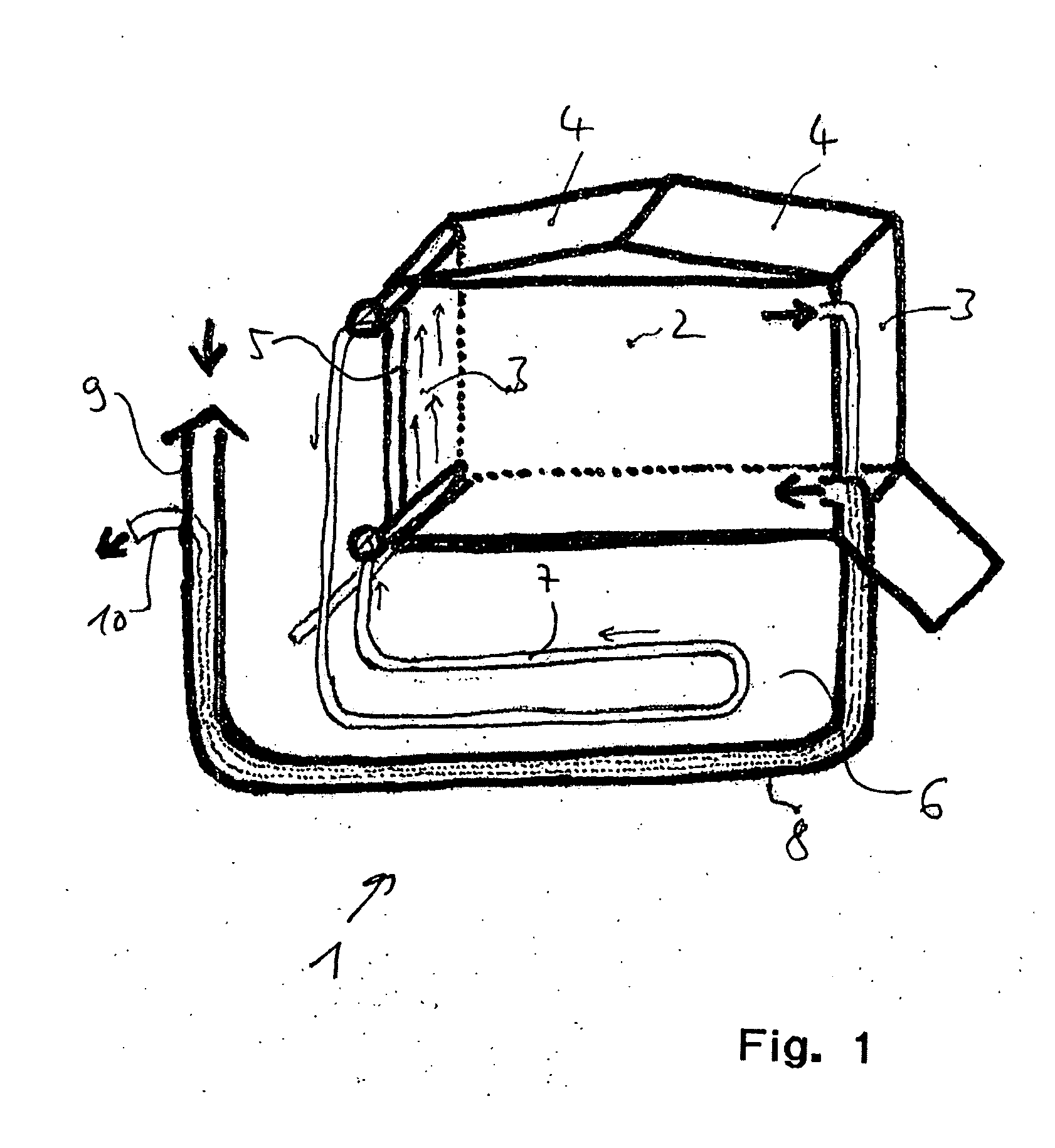Low-energy building, particularly greenhouse or stabling
a low-energy building and greenhouse technology, applied in solar heating energy, space heating and ventilation, agricultural machinery and equipment, etc., can solve the problems of high energy requirements, insufficient transfer of energy to commercial buildings with large glass surfaces, greenhouses, etc., and achieve the effect of reducing the temperature, avoiding overheating the whole building, and increasing the temperature in the interspa
- Summary
- Abstract
- Description
- Claims
- Application Information
AI Technical Summary
Benefits of technology
Problems solved by technology
Method used
Image
Examples
Embodiment Construction
[0041]FIG. 1 schematically shows a building 1, which particularly is formed as greenhouse.
[0042]The building 1 comprises an inner space 2 which is surrounded by walls 3, and roof areas 4 particularly consisting of windows. Thereby, the walls 3, and the roof areas 4 are formed as double windows made of plastics, plastics foil, or glass. Interspaces 5 are defined by the double windows. Under the building, there is a terrestrial heat reservoir 6 which is connected with the interspace 5 via a conduit 7. Air is pumped out of the terrestrial heat reservoir 6 into the interspaces 5 via the conduit 7. In times of low temperature, the air in the terrestrial heat reservoir 6 is heated, and forms a temperature barrier in the interspaces 5. If, for example, air of 15° C. pumped through the interspaces, this has the effect of the ambient temperature of the building 1, having 15° C., only.
[0043]In times of high temperature, the heat may in contrast be led away out of the interspaces 5, whereby th...
PUM
 Login to View More
Login to View More Abstract
Description
Claims
Application Information
 Login to View More
Login to View More - R&D
- Intellectual Property
- Life Sciences
- Materials
- Tech Scout
- Unparalleled Data Quality
- Higher Quality Content
- 60% Fewer Hallucinations
Browse by: Latest US Patents, China's latest patents, Technical Efficacy Thesaurus, Application Domain, Technology Topic, Popular Technical Reports.
© 2025 PatSnap. All rights reserved.Legal|Privacy policy|Modern Slavery Act Transparency Statement|Sitemap|About US| Contact US: help@patsnap.com



